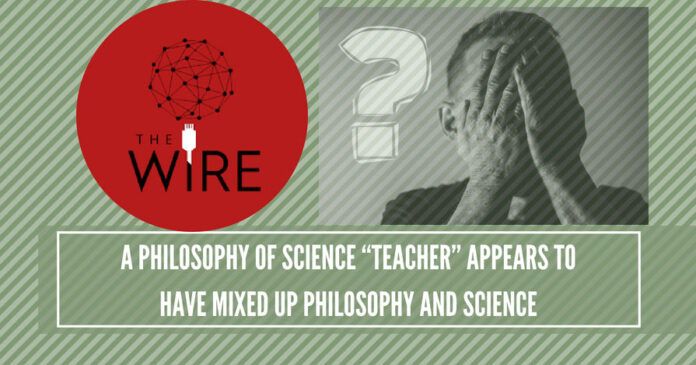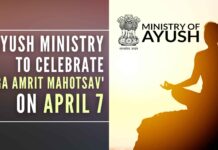
A philosophy of science “teacher” appears to have mixed up philosophy and science thoroughly on his review of Patanjali’s Yoga Sutra. We will see how.
In a poor unscholarly brief note, a philosophy of science “teacher” dives deeper than his depth in the Wire (https://thewire.in/the-sciences/the-yoga-sutra-is-incompatible-with-modern-postural-yoga-and-science). The author appears to have mixed up philosophy and science thoroughly that he has lost track of all senses: connotative, denotative and referential. We will see why below.
A Sutra is a format to help capture the maximum information in the shortest possible length of a text.
Is it because of his sense of a visceral hatred for anything that will incense his sense of his own sense?
Obviously, the anglicised “philosopher of science” is relying on some quotes and comments on a set of sutras by Patanjali on yoga by some English (read White Western) “Pandits.” He also relies on some statistics. Apparently only one percent of the words, that is just eight words, “concern” asanas. He is expecting perhaps a book on principles of surgery to keep repeating surgery, surgery, surgery to make up 50 percent of the words, the rest being cut, cut, cut and blood, blood, blood!
For the beginners, Patanjali’s Yoga Sutra is an extremely pithy text with just 195 sutras (basically one-liners), which the author seems to accept somewhat indirectly.
What is a sutra? It is a format to help capture the maximum information in the shortest possible length of a text so that it enables easy memorization and transmission, with fidelity. That is why these texts have lasted for many thousands of years. It was also an opportunity for the authors to showcase their language skills and mastery, as a secondary phenomenon. In fact, the Paninian “grammar” called Ashtadyayi is only about 50 pages long. It is also in the sutra format. However, 100,000 scientific papers have been published on the computational aspects of the algorithms in it. In fact, formal Sanskrit “grammar” (and for that matter, most Indic language grammars) is so precise and algorithmic that sutra composition is actually possible. Tirukkural, an ancient Tamil text; Tolkappiyam (an ancient Tamil “grammar” text) are all in sutra formats.
To give an easy to understand example, multiplication tables are a kind of a semi-sutra. Two times six is twelve means you add two to two six times to get twelve. Try it for yourself. Why tables? So that it is easy to use, which can then be applied on much larger numbers. Simply because the set of tables has no large numbers does it mean that the tables are incompatible with complex arithmetics? This kind of absurd argument is neither philosophy nor science, let alone philosophy of science.
Patanjali’s yoga sutra is a “sutra” text, that is an extremely dense, super-concise exposition of principles of yoga.
Going back to the “principles” of surgery example, a reader of such a book cannot expect to find surgical techniques all listed there, let alone described there. What the author has done, in addition to exposing his ignorance of the basics of what a sutra text is, he also does not understand, evidently, what a book on principles will look like and how vastly different it will be from a practical manual.
Patanjali’s yoga sutra is a “sutra” text, that is an extremely dense, super-concise exposition of principles of yoga. Doing statistical gymnastics on it is outright laughable.
The hoary English grammar text Wren and Martin is many hundreds of pages long, but Panini is hardly 50 pages long. Does it mean Sanskrit grammar is incomplete? The author fails not only making sense but succeeds wonderfully in claiming nonsense.
Who said science is based on empirical experiences?
Science is based on empirical measurements, not “experiences.” Does anyone feel a tingling sensation and pleasure when one measures the length of a line with a ruler scale? Facepalm. One word. That is it.
The author of this piece pitties the Wire columnist’s students to whom he teaches “philosophy of science.” His readers have a duty to explain what otherworldly science is that? This author for one would like a pleasurable sensation on using a scale! Ahem.
Note:
1. Text in Blue points to additional data on the topic.
2. The views expressed here are those of the author and do not necessarily represent or reflect the views of PGurus.
- Priyanka Vadra continues the illegal abuse of Gandhi’s name and legacy - March 19, 2019
- Is secularism the other side of genocide and is it thus unconstitutional? - November 10, 2018
- Is Yogi’s government inadvertently putting the Kumbh Mela at subversive risk by Breaking India forces at Harvard et al? - October 17, 2018










